Last updated on May 14, 2024
Your new bike has already seen a lot last summer: a few day trips, a holiday ride and a few weekend trips. And of course you ride it to work every day in the summer.
Page Contents (click line to jump the text)
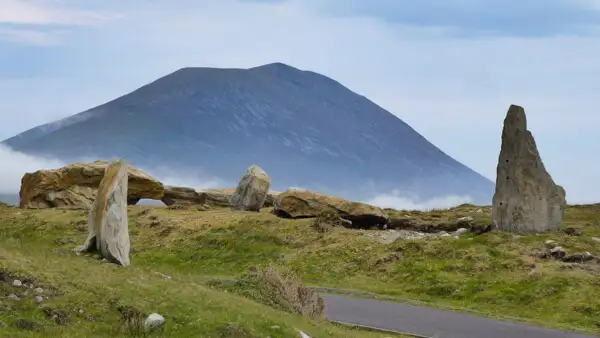
Intro
So far, nothing has ever broken, so just pack it up and head to Ireland ….., right?
In Ireland, the roads can be a bit “bumpy” with varying quality surfaces. So your bike will have to take a beating. We know the roads well because we live in Ireland (second home). In summer we run our motorbike rental business here (www.easycruiser.tours) and we also have nice guest rooms.
Yes, perhaps – but it is more likely that wear creeps in at some points. Unnoticed at first, until at some point the problems come to the surface. Usually when you need it least.
To make sure this doesn’t happen to you, I’ve put together a few tips on checks and maintenance – so you can enjoy your trip to Ireland without a care in the world.
Important: If you don’t feel confident doing the following work, then simply take your bike to a bike shop for an inspection at the beginning of the season or before a longer trip.
We won’t be discussing any difficult repairs here, just simple cleaning, checking and adjustment. Any damage you find should also be repaired by a bicycle repair shop.
Clean the bicycle thoroughly before checking!
If your bike is completely filthy, it will be difficult to tell whether everything is in order. For this reason alone, and because your bike deserves a little care, you should start with a thorough cleaning.
There is a cleaning foam that can be applied to the bike from a spray can, let it work for a while, spray it off with a soft water jet and clean it with a few rags (an old T-shirt will do).
Important: strictly separate oily or greasy areas from oil-free/grease-free areas!
You can’t clean a greasy/oily chain with water, so leave that out for now, we’ll do it differently later.
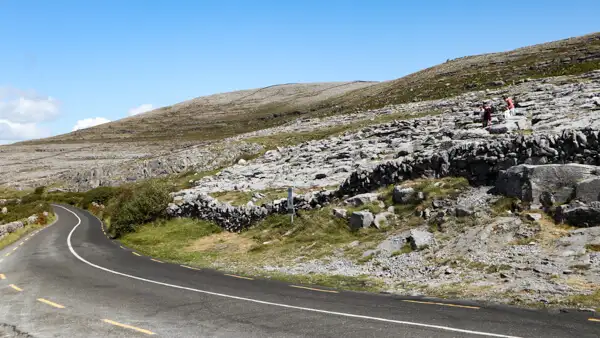
The places that are used for braking, i.e. brake discs on disc brakes or the rims on rim brakes, must not get oily under any circumstances – so use an absolutely clean cloth for these places.
If you do the whole thing at the Kärcher station, make sure that you never use a hard water jet on the wheel bearings, the bottom bracket or the seals of the suspension, because otherwise you could force water into the bearings and worsen the lubrication of the bearings.
Are the chain and sprockets OK?
When the bike is dry, you can start working on the gears and the chain set. To do this, hang the bike on a stand or turn it upside down so that you can turn the pedals and thus the chain freely.
There are special cleaners that you can apply to the chain and sprockets with a spray can. Spray cans with a brush at the end are good because they produce less spray mist. To keep the brake discs clean, put a piece of cardboard behind the parts to be sprayed. Also pay special attention to the small gearshift cogs, which tend to collect a lot of dirt.
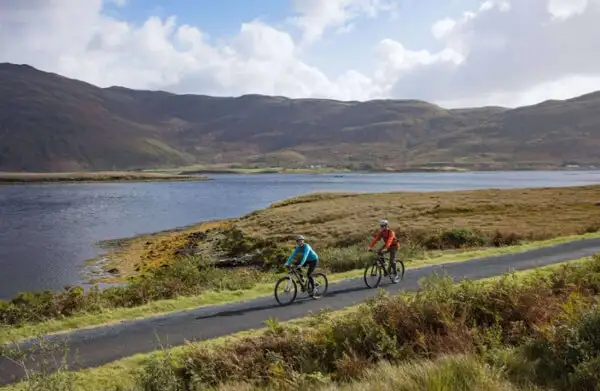
Leave the sprayed parts to work for a moment and then wipe them with a dry cloth.
Let the chain run through the cloth in your hand.
Then you can apply a new chain oil. Spray the chain bit by bit, again taking care not to spray any mist on the brake disc or rim. If this should happen, you can use brake cleaner to clean the brake oil-free. You can’t do this with water.
Everything clean and oiled? Then take another look at all the parts: is the chain damaged at any point? Are the gears unevenly ground or broken at the edges? Is anything bent? Then off to the workshop.
Are the tyres and inner tubes still OK?
How old are the tyres and inner tubes? Rubber is kept flexible with plasticiser. Over time, rubber ages and develops small cracks and fractures. You should not go on a tour with such tyres and inner tubes.
Let the tyres rotate slowly past your eye and look at them closely from both sides and on the tread. Are there any foreign bodies that have penetrated? Any cracks or holes? Is the tread still good enough? In Ireland you should have a good tread, because the roads are sometimes dirty, or you drive a piece of gravel road.
How do the valves look? Do the tyres hold air well? If in doubt – replace tyres, inner tubes or valves!
Are the wheel bearings, rims and spokes in good order?
Do the wheels run freely and round or do they wobble sideways or up and down? Do the rims have any visible damage, such as dents or deep scratches? Are the spokes OK, or is one torn out or badly bent?
Check the tension of the spokes by pressing two spokes together a little with your thumb and index finger. Do this with all the spokes. Were there any differences in the force you applied? If so, the tension on one or more spokes is not correct (workshop).
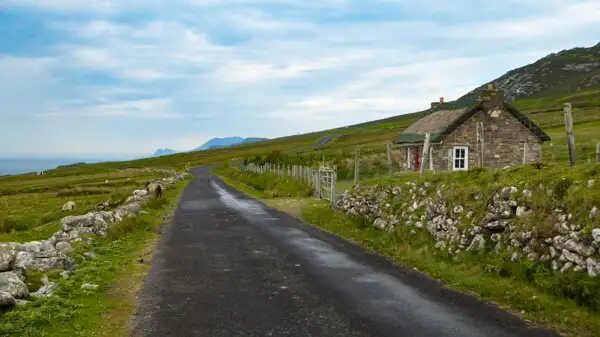
Is there a grinding or crunching noise in the wheel arch? Then the wheel bearings could be dirty or damaged – have the workshop take a look.
Are the pedal bearings, pedals and click shoes OK?
When you turn the pedals to check the rims, also feel (and listen) for any vibrations, grinding or crunching in the bottom bracket. Also check that the bearing is tight and that the pedals and clickers are tight. Especially the click plates on the shoe tend to come loose.
Is everything OK with the handlebars?
Turn the handlebars slowly from left to right and back. The handlebars should move smoothly and without jamming, jerking or grinding. If not, have the steering head bearing checked.
Is the handlebar stem tight? Is the handlebar properly adjusted and tight? Are the gear levers and brake levers well mounted in the right place?
Are the brakes still good?
Is the braking effect good at the front and rear? Are the brake pads still strong enough or do they need to be replaced? Do the brake pads run cleanly on the rim or brake disc, or do they need to be adjusted? I won’t go into detail about adjusting the brakes, if you are unsure, have the workshop do it or have a professional show you, especially with disc brakes.
Do the lights work well?
Whether you have a fixed dynamo light or a battery light, check that it works and that all parts are undamaged.
You can also try out the bell.
Are the gears well adjusted?
If everything looks good, turn the pedals and shift through all the gears – does the gearstick find each gear cleanly? Does everything run without grinding or clicking? Does the gear shift end at the inner and outer cogs, or does it jump off?
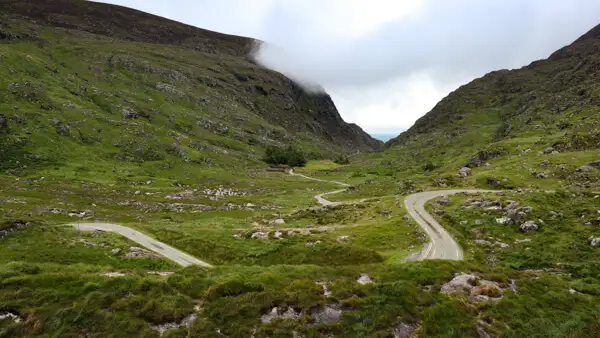
You will probably have to adjust the gears from time to time. You will find a small wheel at the beginning of the Bowden cable (cable) on the gearstick lever. If this is not enough, you can also adjust the clamping of the cable on the gearshift arm. At the end of the exercise you should be able to shift through all gears.
You don’t have a derailleur but a hub gear? Test whether you can shift through all gears properly and adjust the gearstick with the cog on the gearstick lever if necessary.
Are the luggage racks OK?
Luggage racks can bend in a fall and screws can come loose. It’s very annoying if something breaks or falls off on the way, because then your luggage is hanging nowhere.
Check all bolts, tighten them once and check if there is any damage. Is something broken? Then replace it immediately.
Are other components and attachments tight and undamaged?
Bottle cage, smartphone holder, handlebar bag holder, rear view mirror, whatever is mounted on the bike, look at the mounts for damage and check the adjustment and fit. Anything that comes loose, better do it now than on the trip.
And finally, do a little test ride
Everything OK? Then take a short test ride, shift all gears up and down, check both brakes and if everything is fine, your bike is well prepared for the big journey.
Have a great cycling trip in Ireland!
More interesting articles for you
TAKING YOUR OWN BICYCLE TO IRELAND – IS IT POSSIBLE?
CLOTHING AND PERSONAL EQUIPMENT FOR CYCLING IN IRELAND
EQUIPPING YOUR BIKE FOR THE BIG TRIP TO IRELAND – WHAT DO YOU NEED?
BICYCLE TRAVEL ROUTES ON THE ISLE OF IRELAND – WHERE ARE THE MOST BEAUTIFUL AREAS?
Photo credits cover photo: Mountains near the town of Donegal, photo by Ulrich Knüppel-Gertberg (www.easycruiser.tours, www.irland-insider.de, www.ireland-insider.com)
